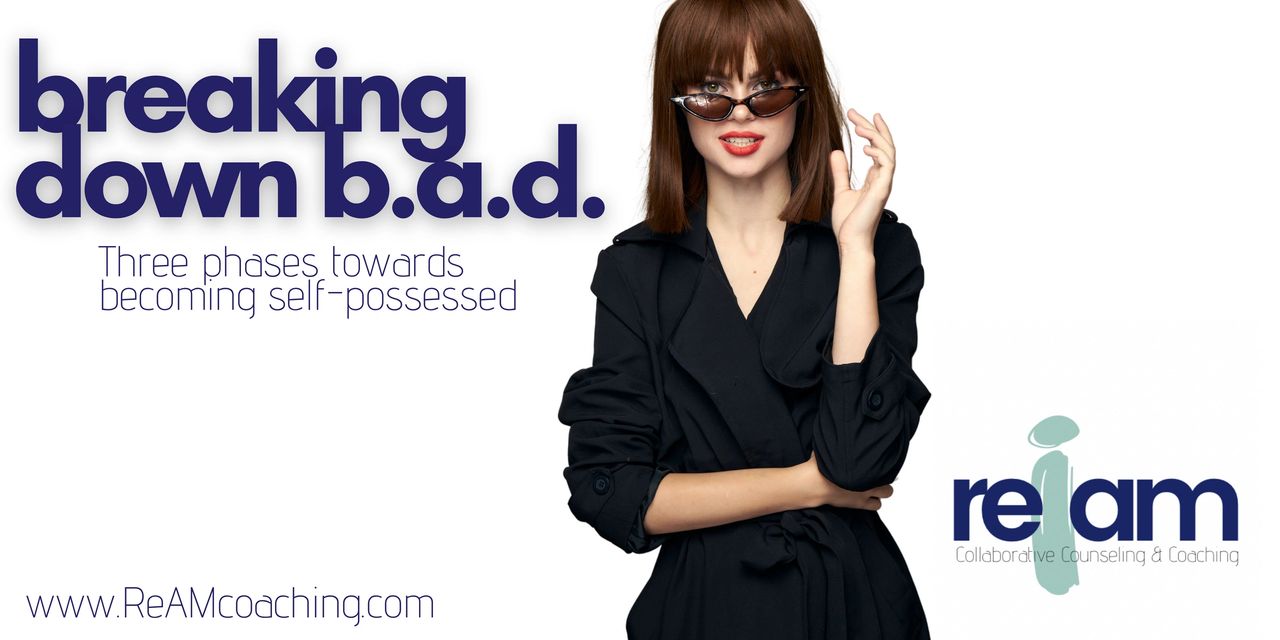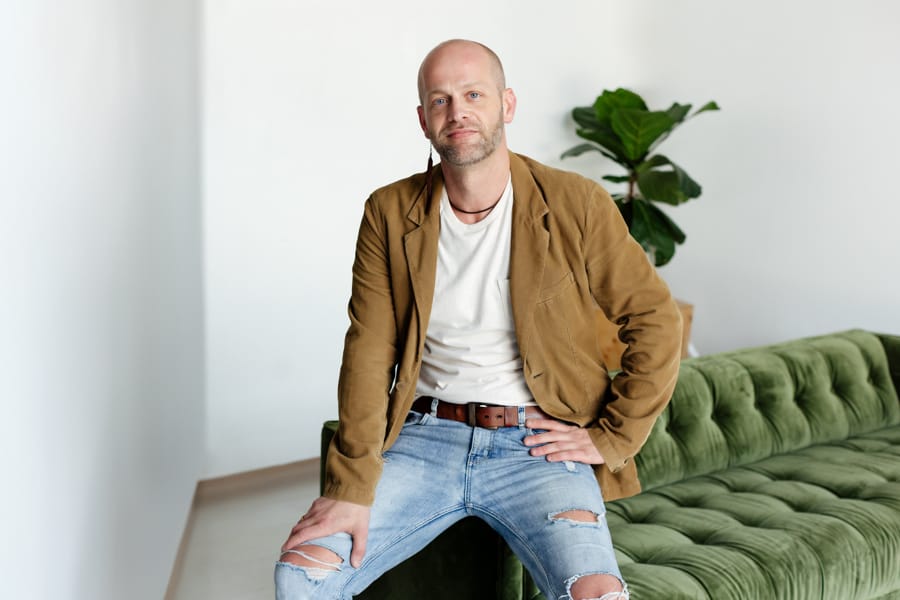One concern with potential clients’ approach to therapy is their wanting or having an expectation for something prescriptive – a ‘do this then this’ will happen solution. I would be selling snake oil if I did say ‘follow these 12 steps and results guaranteed’ or ‘pop this pill to fix what ails.’ Many hear and know therapy is a process yet still find it difficult to set this type of expectation aside.
Since I know that it helps to have a sense of direction in therapy and a path forward – I have tried to organize the self-possession work into a 3 phase program. Although it should be approached not as list of tasks to be done and checked off of a list, but rather a process varying radically from one person to another.
What I can provide is a general idea in this article and to any one with whom there is resonance invite you to book a session with me. There we can decide together where we need to begin working specifically for you, explore exercises, and create activities spontaneously along side our dialogue.

We can take this three phases.
The first phase.
Being.
This phase involves cultivating mindfulness and self-awareness, being present momentarily, and accepting one’s thoughts, feelings, and behaviors without judgment. This is often the most difficult part for people and there is a lot to sort out. It is the key shift in paradigm which enables the later two phases to occur.
Western culture is deeply rooted in ideas that we as humans are broken, imbalanced, disordered, and diseased. A view incredibly adversarial to self and can be seen in the boom of self-help, big Pharma, medicalization of health, poor parenting and our predominate, pessimistic view of humanity pictured as a plague on the earth.
Sounds dramatic – but it’s there for the observation.
(if you are interested in hearing more about this part check out this hour long video of Jena Liedoff who wrote a book called the continuum concept – it falls in to the parenting genre, but in this video she sets the need for self-reconciliation out well. https://youtu.be/yff0eL74tGE).
Try on a new narrative for yourself. Reframe your view of yourself and your experience. There is a polish riddle: How do you permanently get rid of an enemy? The answer: you make it your friend.
So goes the process of reframing your view of self. There is no part of you that should wage war on the other parts of you. No self wins a battle with the self. Focus on strengths. You are the product of a long line of survivors evolved over a long period of time – the thing that worked. An ancient machine that persists. Go deeper into some thinking exercises thay require reflection and insight encountering the milieu of your daily life (in traditional therapy this is the space in between sessions).
The second phase.
Allowing.
Allowing involves letting go of external expectations and pressures, and instead focusing on what feels most authentic and meaningful to oneself. Our culture also has an obsession with prohibition and inhibition. Telling one’s self what not to do. This focus is counter productive and often leads to the negative reinforcement of behavior or thought that is negative, intrusive or unwanted.
Don’t eat this. Don’t do that. Don’t be like that. Stop this, stop that. Can’t, Won’t, shouldn’t. etc. Even when things are said sweetly they carry implication of don’t. When your parent said “Now, be good.” as you walked into the store – there was implied – “Don’t be bad” (which children of course internalize “I am bad”).
So, in this phase work at adopting an attitude of allowance. Again through exercises, thought experiments, and activities identified together in therapy come organically and spontaneously out of the dialogue we are having.
Allowing is something similar and akin to letting go of. Another way of thinking of it is giving one’s self and others around self permission. I can permit myself to feel, do or be ______. (There is also a good activity for this, see my earlier article Do Nothing).
The third phase.
Doing.
Doing involves taking action in line with one’s values and goals, and making intentional choices that align with one’s sense of self.
Our culture has an obsession also with doing. It places a value upon being productive. Thus we develop ideas we must always be striving, working, improving, advancing, becoming better. This comes at the cost of our health.
The body is made for sprints – not constant marathons. In our desire to be seen as valuable we can easily get out of alignment with ourselves and into a path of becoming what others want us to be (or our perception of it). Essentially, this phase is learning to become a disciple of your self. Learning how to follow one’s own intuition, decide upon one’s own values, and engage in one’s own interests.
Discipline is often thought of as spanking, punishment, or in some thing associated with delayed gratification or the prohibition of some thing. Denying self. No wonder it would be something we avoid. The way that I am framing discipline here is more alike when we say there is a discipline of law, or a discipline of medicine. It is the practice of (in this case) being one’s self. There are a number of activities and exercises that we can work through in therapy to help with developing this type of discipline.
These phases don’t have to be done in any particular order or have any set way of approaching them. Our therapeutic dialogue and insights arising out of it interact with your daily life, and reflections on experiments and exercises create a paradigm shift – hopefully leading you to be able to generate change you are wanting.
If you are ready to embark on your journey towards becoming self-possessed reach out to me and learn how to schedule a virtual appointment or consultation. David@reamtexas.com.

